I’m often told that I’ve built up a decent art collection over the years (false modesty alert). Review my 7 tips if you’re a budding Millennial or Gen-Z collector – or are starting a collection at any age
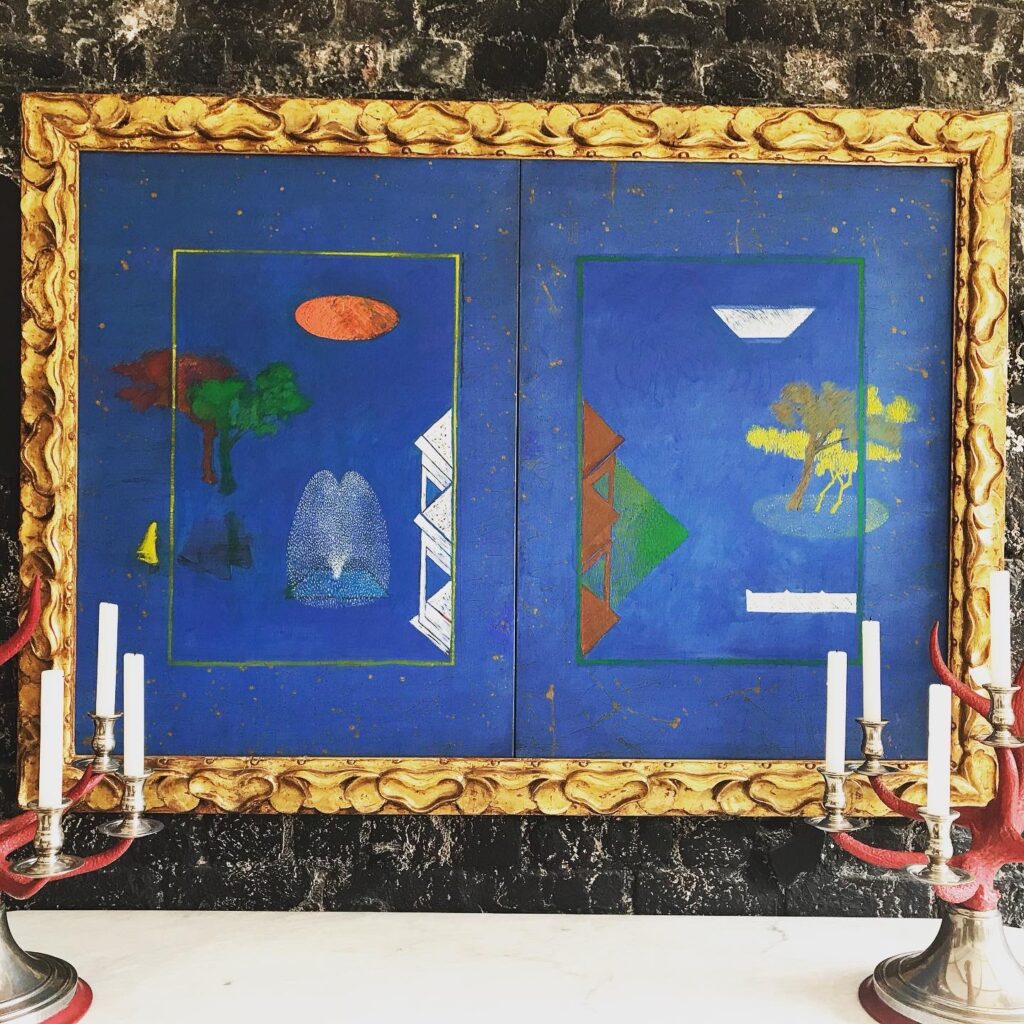
Given his continuing influence on contemporary Pakistani art, it seems fitting to start this blog with an image of Zahoor ul Akhlaq’s oversized, minimalistic ‘miniatures’ (with not-so-minimalistic frame)
Disclaimer: I am not an artist, gallerist, critic, curator, or art educator. I do not have a Bachelor of Fine Arts or Master of Fine Arts – just a lot of fine art (or at least I think it is). As such, this blog contains no highly artsy utterances such as “The three-dimensional geometry of (pick a name)’s work harkens back to early twentieth century cubism when Picasso was seducing his muses under the post-impressionist influence of Cezanne”. Okay, so that made literally no sense, but you get the point: if you want to read ‘that person’, open up the culture pages of the New York Times tonight (you won’t need a sleeping pill).
The ‘tips’ below are for new collectors and may not sit too well with the art community: indeed, some may find my thoughts ill-conceived or downright offensive. (So if you’re an artist with a disagreeable temperament, especially one who hasn’t sold a painting recently: please stop reading Now!) On the other hand, some of my sage advice may appear rather ‘obvious’, even to beginners. That is because, as a new friend likes to remind me with alarming regularity, there are no ‘magic bullets’ in life, the universe, or beyond.
WIthout further ado, my 7 personal tips are:
1) Don’t Overthink It
When I am strongly attracted to a piece of work, I feel an almost magnetic sensation in my gut that I cannot describe in words (unless there is a red dot near said work, in which case I can describe nausea). Whenever I have tried to overthink a piece of work, or convince myself to buy it because I was in need of retail therapy, I’ve made a mediocre decision and generally regretted it. Of course there are exceptions to this advice (we won’t call it a rule, okay). If you were to find yourself in a time machine and vist a Van Gogh exhibition in old Amsterdam, and then return to 2021, you’d be jumping with joy even if you’d purchased the crappiest piece. But we are not talking of exceptions or fantasy. Moral of story: if you need to convince yourself to buy a piece of work (because your artsy friend thinks you should, or you’re trying to keep up with the Maliks), then don’t. It will not ‘grow on you’, nor will you fall in love later like a desi arranged marriage.
2) Don’t make decisions based on silly notions of ‘future value’

An unidentified work by Unver Shafi Khan acquired at a group exhibition in Karachi, late 1990s.
I have encountered people who claim to buy art as an investment, even boasting they can spot the next Picasso. Some of these people may indeed have great intuition (or magical powers), but the value of art is about as predictable as the value of stocks. My rule is very simple: if I like it and can afford it, I buy it. When I bought my first (and only) Imran Qureshi miniature in 2001 for 15,000 at a hole-in-the-wall gallery near Auriga Center, Lahore, I had no clue that he’d be hobnobbing with Bono one day and painting insane murals on the rooftop of the Met in New York. I just liked the depiction of a guy with vines growing around him with the inscription “Aik aashiq apnay mahboob ka intizaar kar raha hae.” The same applies to my early acquisitions from Ali Kazim (now back with him for restoration), Atif Khan’s non-edition works, Unver Shafi Khan, Wasim Ahmed, and a few other now very prominent artists (in fact the first Unver Shafi painting I acquired from a group show at the now-defunct Sheraton Hotel in Karachi wasn’t even identified as his work). But, since this is beginning to sound like a glorification of my great instincts, let me also admit that when I bought XXX’s work, thinking “this person is going places”, nothing happened. XXX went nowhere and is still selling at the same price, adjusted for inflation (he/she does sell, mind you). Moral of story: Buy artists whose work you love: do not try to predict their future value. And try not to look at art as a commodity hanging on your walls, even if you are an investment banker.
(Sorry, I cannot tell you who XXX is — that would be very mean! Let’s just say he/she isn’t the only one. There are also a few stunning works I did not acquire that I regret to this day, simply because I didn’t then have the confidence at the time to bet on the artist.)
3) Try to avoid hackneyed genres (unless they’re great)
Once again, I am not sure if this will sit well with the art community, but that’s okay. To illustrate my point of (now) hackneyed genres, I’ll use the example of the ‘modern Mughal miniature’. About three decades ago, under the tutelage of the visionary Zahoor ul Akhlaq (see blue diptych painting on top), artists at Lahore’s National College of Arts gave birth to the modern Mughal miniature. You’ve seen this by now: contemporary subjects in Mughal style, or Mughal subjects doing modern-day things, all in a relatively minimalistic style (as opposed to traditional miniatures which are anything but minimal). Now-iconic artists like Shazia Sikandar, Imran Qureshi and others pushed the envelope with their early works before going on to develop their own unique styles. But, over the passing years, the original style became a little predictable, sometimes even forced (IMHO), depicting Mughal emperors having Coke (Coca-Cola, I mean; I’m not sure if Mughals had the other type), Mughals hanging out with modern-day supermodels, using smartphones, etc. I must admit that, as a young person, I got quite carried away with this new vision and acquired a number of these works. This style continues to intrigue me (childhood obsession) but I only buy these works now if I find something that effortlessly combines modern minimalism with contemporary ideas (and sometimes past influences) to create an altogether new vision.
Familiar compositions from more ‘traditional’ art genres that are, IMHO, ‘done to death’ include:
a) Multiple kites in the sky or over an Old City skyline (I mean, seriously.)
b) Women sitting on manjees in villages surrounded by bovine animals
c) Paintings depicting various forms of horses, women, and pigeons, often in compromising positions (unless the artist happens to be called Jamil Naqsh)
d) Cheap copies of Gulgee!
If you’re a newbie collector, you could be forgiven for wondering what’s left after all this! Trust me, I am surprised on a daily basis with the freshness of work emerging from young artists (umm, and even the more established ones) — including at times novel twists on past ideas. Moral of story: seek original work but, if you’ll be forever scarred unless you have that particular style, make sure it’s a little unique and at least brilliantly executed.
4) Buy Edgy Art but only if it is Authentic
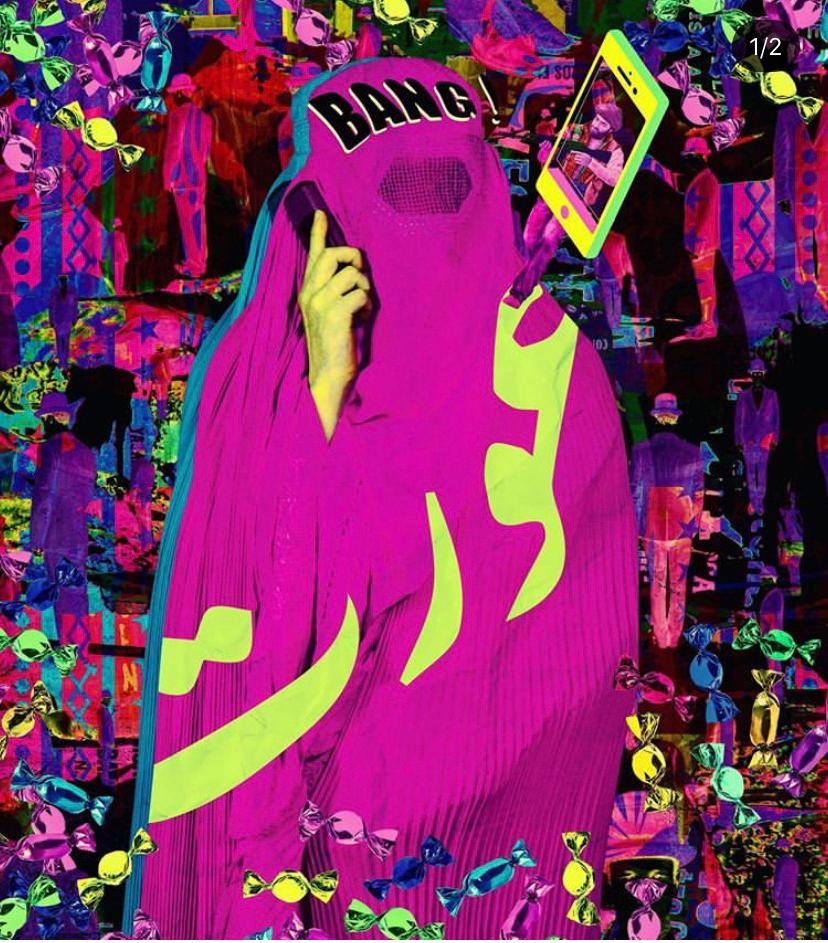
The limited edition digital prints of Eemaan Rahman, better known as Beygum Bano, are about as edgy as it gets.
I tend to overuse the word ‘edgy’ when describing contemporary art, and nobody has ever asked me what on Earth I mean, so I’ll try to break it down. To me, edgy work pushes the envelope, challenges the viewer’s ideas about art, may be experimental or unorthodox — maybe even a bit controversial. I like edgy art. But I am also aware of art that is trying a bit too hard to be edgy or avant-garde but really isn’t. The “really isn’t” could be for a number of reasons:
a) The work is overly inspired by the ‘edginess’ of other works and lacks its own originality. Let say Artist A has produced a very successful body of work depicting female Afghan construction workers – with their pet crocodiles. The series sells out instantly, making Artist A a mini-celeb (at least in her head)…but then Artist B comes along and copies the same composition, maybe tweaking it a little (the crocodiles become alligators?). I may not buy Artist B’s work.
b) The artist is trying too hard to be unorthodox or controversial and the work doesn’t come across as authentic or honest. We all get a sense when someone is trying too hard to impress (or shock) with their ideas.
c) It basically sucks in terms of execution. See point 6 below.
Moral of story: Do buy edgy art, but make sure it’s not edgy for the sake of edgy with nothing else to offer (sorry, too many edges here!)
5) Do buy from the thesis exhibitions!
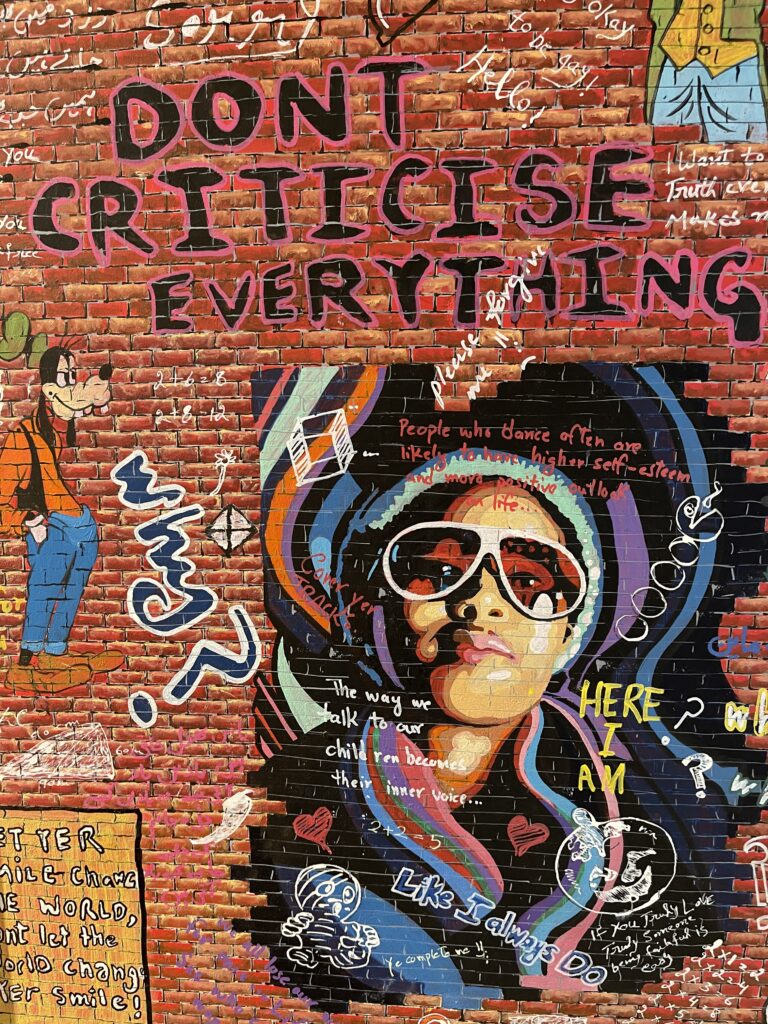
Most people agree that Mohsin Shaikh was the star of the NCA 2016 thesis show. Here, a section of an oil painting depicting a red brick wall with his trademark ‘pop art wisdom’
Since I was a teenager, I have visited the annual thesis shows at different art schools in Lahore (since that is where I live), particularly the NCA and later BNU. Some of the best works I’ve acquired have been from these thesis shows. Though I sometimes forget the artists’ names, I’m often reminded by faculty years later how well these graduates are doing. This may appear to be an ‘obvious’ piece of advice but I thought it useful to include because thesis shows can be a double-edged sword, with young, enthusiastic artists often pricing their work beyond market value compounded by the ‘mystery’ of many good works often being ‘booked’ before opening day! But, to their credit, I’ve found that most of these youngsters can be fairly flexible about producing new works – and even about their prices – unless of course there are 3 collectors fighting over a work (a familiar scene at NCA’s thesis shows, as witnessed a few years years ago over then graduate Mohsin Shaikh’s graffiti-infused canvases). But if you are going to go to a thesis show, go early, or don’t bother (unless you just like looking at pretty paintings, which I suppose is perfectly fine, if somewhat inexplicable). Moral of story: get yourself invited to the previews of thesis shows, or just barge in (and take some cash for advance payments — young artists are no fools!)
6) The execution must simply be great!
I have referred to the execution in a couple of points above. To me, this is possibly the most important piece of advice. I don’t care how unique a piece of art, nor how clever (yes, not even if it’s so ‘edgy’ that it draws blood) if the drawing or painting are not well executed. The genre of course informs the execution. Miniatures and realism, for example, require meticulous drawing/painting. The human anatomy must simply be drawn brilliantly – unless it’s Picasso. Eyes, hands, and feet must look like…eyes, hands and feet (again, unless you’re buying Picasso). Skin tone must be perfectly blended (if the artist is making an attempt at realism). Artists who work in more abstract genres can sometimes get away with, well, whatever (because we’ll never know what they were supposed to be making!). But, jokes aside, I can think of no artist who has succeeded without great execution. So unless you can afford to buy Jackson Pollock’s abstract, paint-dripped canvases for 50 million dollars, please do not make any exceptions — and even then, you’ll find that there’s a method to the madness. Moral: drawing matters.
7) Do not grieve the one that got away
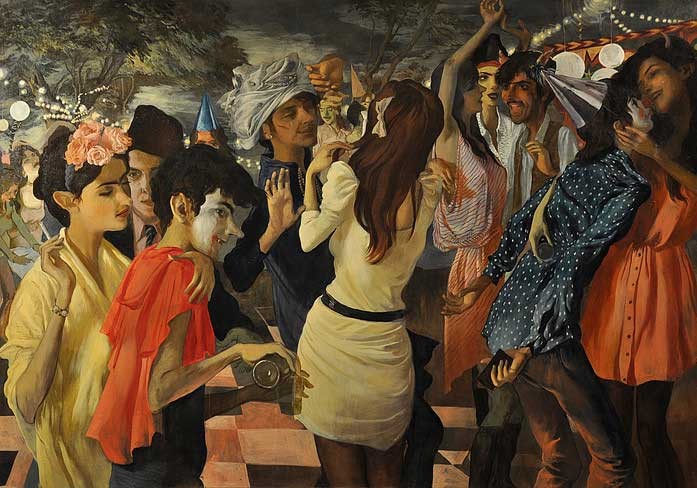
Salman Toor. Enough said.
A collector can be like a jealous lover. The pain of not being able to acquire a piece of art that you loved, or a now-unreachable artist when you had the chance, can feel like an unrequited love. If this sounds a little dramatic, it isn’t. I have often arrived at previews and shows in my fashionably late style only to find that all good works are gone. Usually that’s not life-threatening, but there are times when it feels like a big loss. To illustrate this point, I have been hoping to buy Salman Toor’s work for years, which I also mentioned to him a couple of times before he moved to New York (hoping he’d get the hint, but he just smiled benignly). On the two occasion that I had the chance to buy his work, I either found it too ‘suggestive’ (umm, because that’s what he does) or felt that the secondary seller Aunty was asking for too much. But that all changed in Dec 2020 when his work was auctioned for a record-breaking $822,000 at Christie’s. I now know that I will not be getting a Salman Toor painting unless I have a million dollars to throw at it. Moral of story, for myself also: do not grieve the artist whose work you were not able to acquire: it simply wasn’t meant to be, and other artists will come along. Just try to catch them before they move permanently to New York and are featured in Time magazine’s 100 Next emerging leaders list (presumably a precursor to being their 100 Most Influential People in the World list).
Finally, my penultimate* piece of advice is to ONLY buy art if you are driven to buy it, not because you think it’s the cool thing to do (or because I do). And if indeed you are driven to buy it, then my ultimate advice: trust your gut and you’ll soon be on your way to building a collection that I will probably hate you for!
*penultimate is almost always misused in Pakistan and means second to last, not “the ultimate ultimate”, contrary to what most people think. (See — multiple advantages of following my blog!)
My next post: 10 Contemporary Artists I’d recommend to Emerging Collectors
Related posts
22 Comments
Leave a Reply to Salima Hashmi Cancel reply
Posts
The Art of Ambiance
How we curated Pakistan’s first boutique art hotel — and how your work can inspire a new generation of travellers…
The Beginner’s Guide to Buying Contemporary Pakistani Art
I’m often told that I’ve built up a decent art collection over the years (false modesty alert). Review my 7 tips…
Why your New Year’s Resolutions are Doomed!
Continued from @kasim_kasuri Instagram I stopped making New Year’s resolutions about 10 years ago. After years of failed resolutions, I…


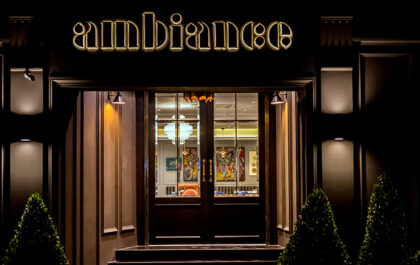
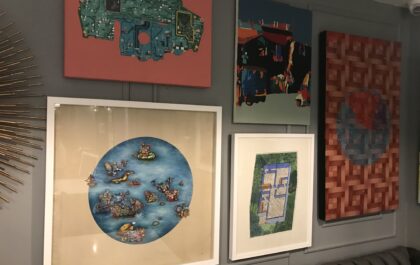



Very good tips. will keep in mind for sure. I have a lot of walls to fill up in my new home so this blog came at the right time
Congrats on the new home!
Buying art is such a personal matter.Your article definitely gives a guideline to those who are newbies. For me good art is something you can enjoy and live with for years to come.
These are all good suggestions and thank you for such an interesting as well as entertaining piece of writing.
Thank you!
I am at a dentis clinic right now and just randomly your instagram poped up. I went through the website, not in a detail at the moment, and found it so interesting. Worth reading. inshaALLAH will go tbrough in each corner and surely will get a lot.
Thank you!
Read it, laughed and contemplated my desire to surround myself with aesthetically pleasing objects!
Thanks – always good to do that!
Art is always impulsive buying for me . Good read .
Thanks..
What a good idea Kasim – straight from the heart and gut and therefore of great value to those finding their way through unfamiliar territory
Thanks Mrs Hashmi – means a lot coming from you!
Very good tips for the novice collector. For me, buying art is all about a personal connection with the piece, whether it is an emotional connection, a political connection, a humorous connection, a satirical connection, a spiritual connection or even a purely aesthetic connection. One must only buy pieces the one is moved by. And the reasons for this association can be many. You want to love to live with the pieces you collect. After all, they are a reflection of your personality. Good advice Kasim. Keep it coming. We all need to encourage people to promote art, as it means promoting our culture, which for too long has been clamped upon!!! Kudos for putting it out there as it should be!!!
Thanks for your detailed feedback, Omer. Yeah there is a narrowing space for art in Pakistan (both visual and performing) and we all need to do a lot more to promote it… kudos to you too for the fine work you’re doing with contemporary art!
Fun reading! And fun advice! Not sure I’m rushing to collect, but if I ever do, some of these ‘outsider’ nuggets will surely stick… and help navigate the minefield of choosing a work of art!
I like pretty things. My sense is your advice will be helpful to me in gathering things that are pretty. Your well written Tip #5 is particularly useful in acquiring pretty things. Because I also like arbitrage. The best thing is when you can arbitrage pretty things. Because I like pretty things. Thank you for sharing your practical lessons learned over a lifetime of amassing things that are pretty.
Thank you. I wonder if your last sentence is meant to be a veiled reference to the former “commentor” 🙂
Have loved seeing the art you’ve collected. And the ones I can see in Pics of Ambience.
Well worth a read and it could become a short series for the young (and not so young!) on buying art.
Good tips
Fantastic write-up Kasim – went through your article and I’m in complete agreement with all the points you mentioned. I especially resonate with the point you highlighted regarding not overthinking a purchase. Art is a very personal thing, one that incites different feelings for different people. If and when a piece appeals to a person, they should go for it. Looking forward to your future blog posts.
I apologise, but, in my opinion, you are mistaken. Let’s discuss it. Write to me in PM.